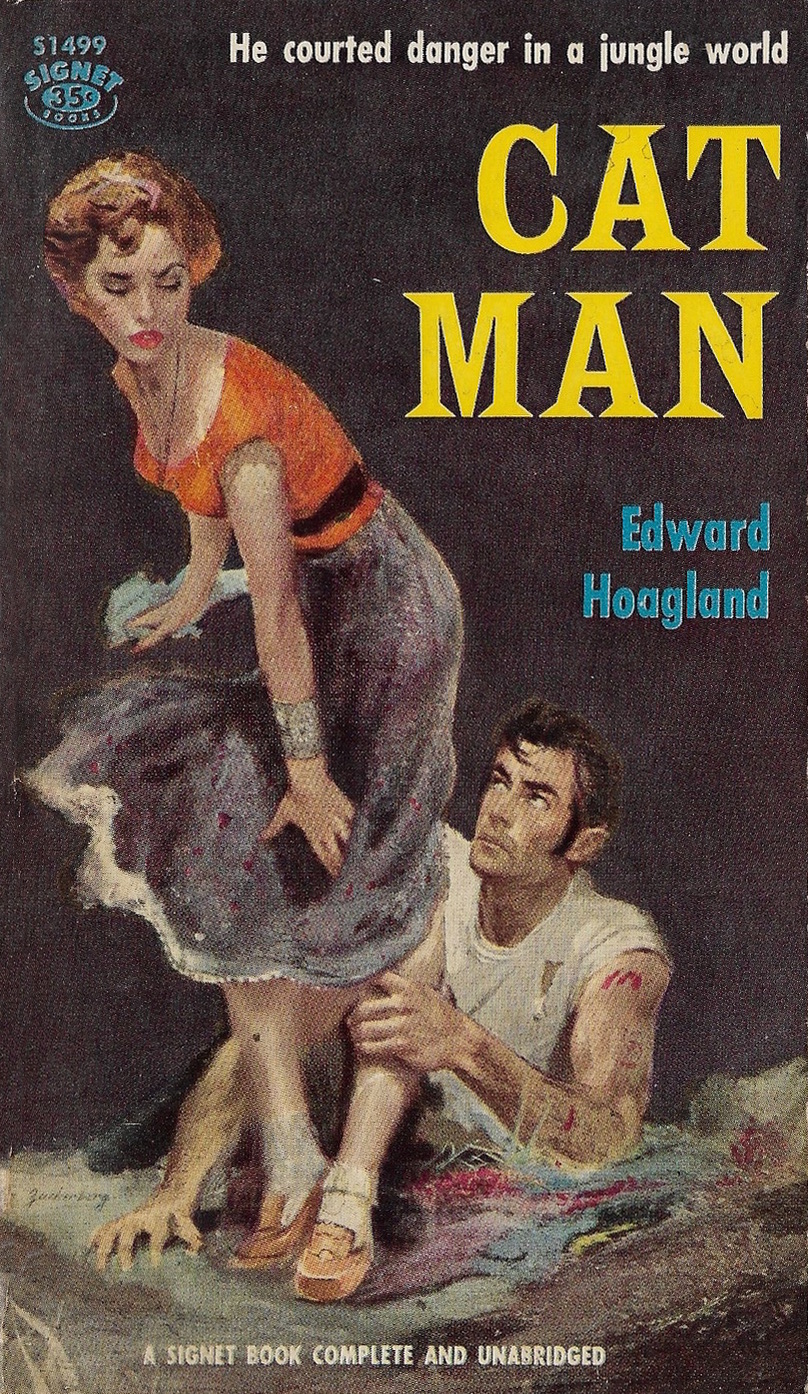| Vintage Pulp | May 9 2019 |

Disturbed characters populate pointlessly offensive book about a traveling circus.

It's been a long time since we saw any cover art from Stanley Zuckerberg—almost ten years, or about fifty-seven in cat years. Zuckerberg's work fronts Edward Hoagland's Cat Man, a gritty 1958 novel that delves into the world of the traveling circus and life of the lead character who works with the big cats. Hoagland had the same job in real life for a while and he wants you to know it, which is why his book is dense with circus jargon. It's also dense with racism. If there were a point being made à la William Styron or Ben Winters, then okay, but there isn't. The novel earned some acclaim, which doesn't surprise us—pointlessly racist books often did back then. But this example is especially indefensible.
We know what some would suggest—that the attitudes on display are historical realism. But that hoary old excuse doesn't hold water, considering Hoagland takes the time to create detailed characters of Native American and Latino descent. Those portrayals are—of course—caricatures by today's standards, but Hoagland does try to make them resonate. The African-American characters, conversely, are just rabble in the background, referred to only collectively, and using the most offensive possible terminology. Worse, even some of the circus animals have names and personalities, while the black characters have neither. We're not joking. This was Hoagland's first novel and he later went on to become a respected nature essayist. Hopefully he learned something about the nature of people.
We know what some would suggest—that the attitudes on display are historical realism. But that hoary old excuse doesn't hold water, considering Hoagland takes the time to create detailed characters of Native American and Latino descent. Those portrayals are—of course—caricatures by today's standards, but Hoagland does try to make them resonate. The African-American characters, conversely, are just rabble in the background, referred to only collectively, and using the most offensive possible terminology. Worse, even some of the circus animals have names and personalities, while the black characters have neither. We're not joking. This was Hoagland's first novel and he later went on to become a respected nature essayist. Hopefully he learned something about the nature of people.




































































